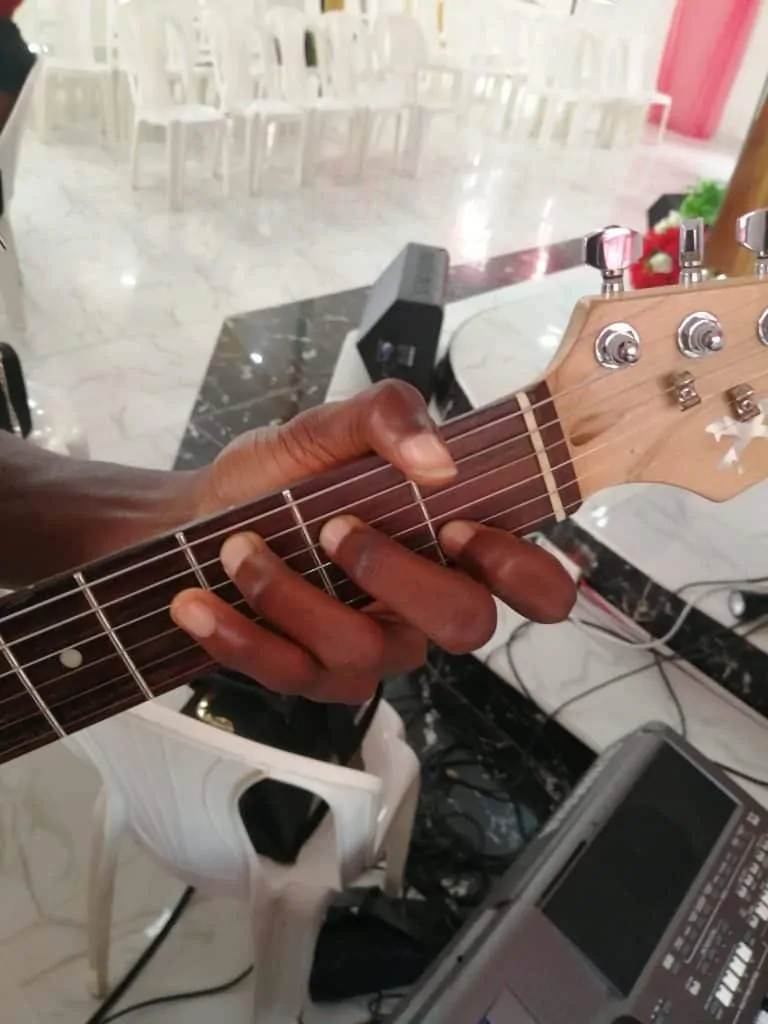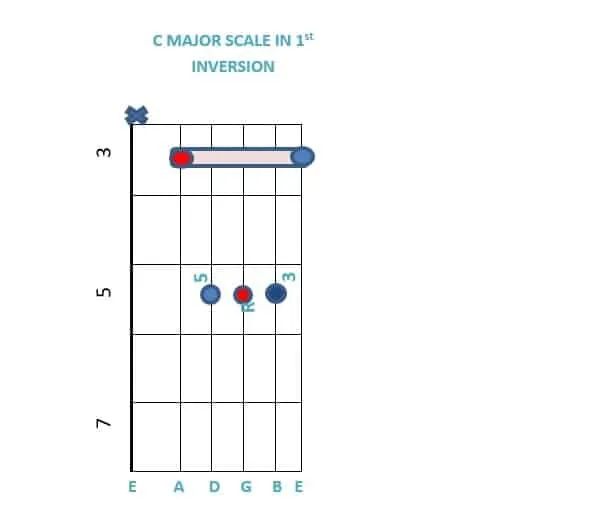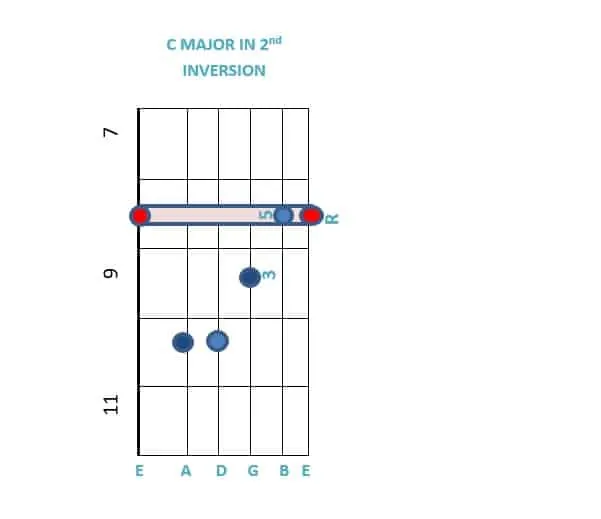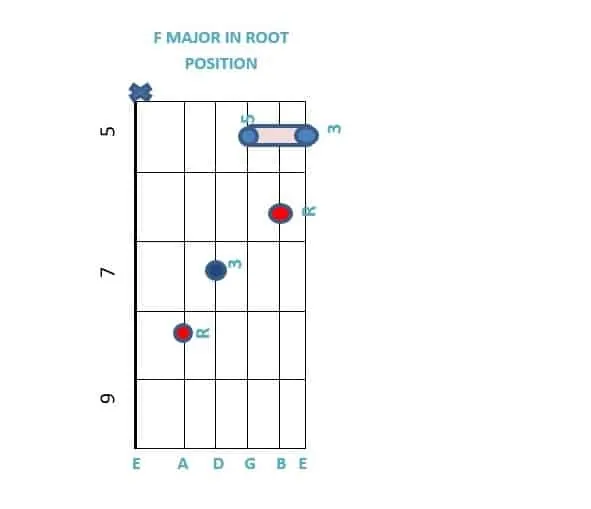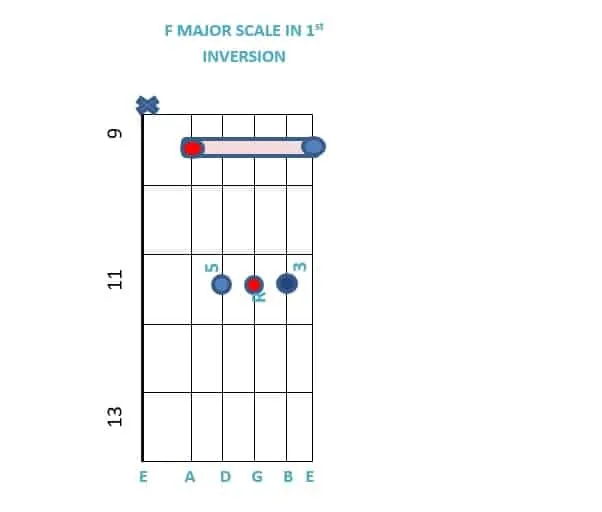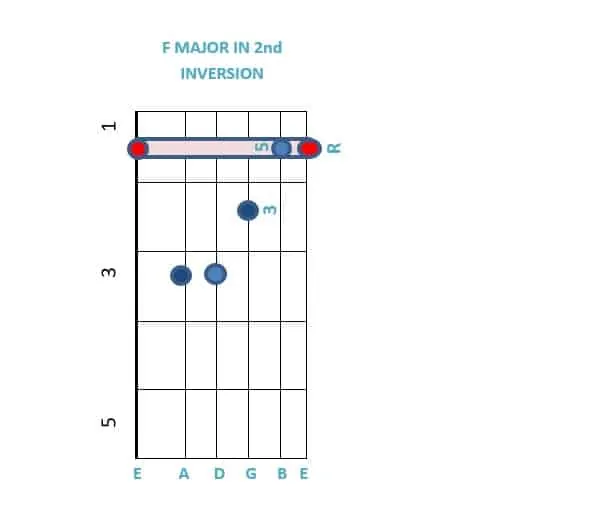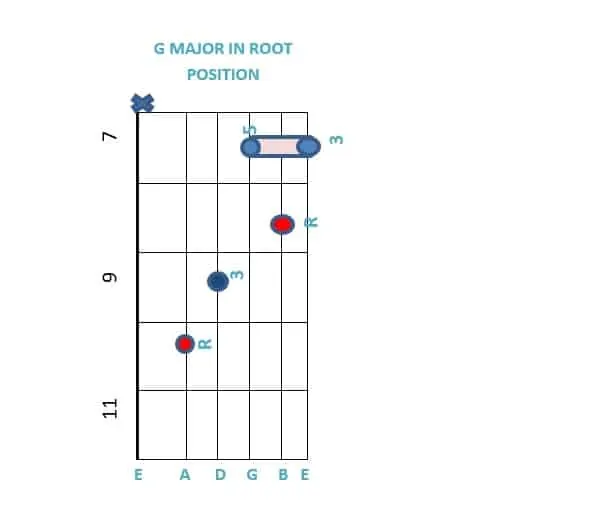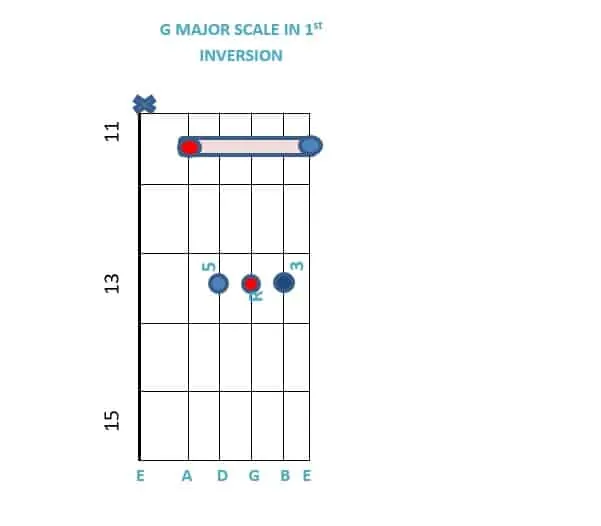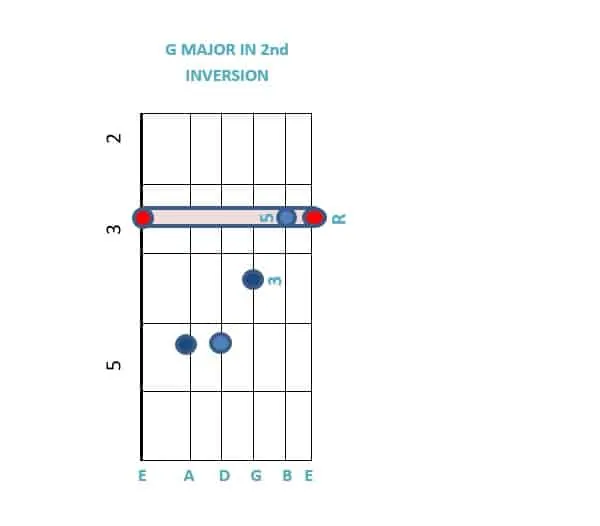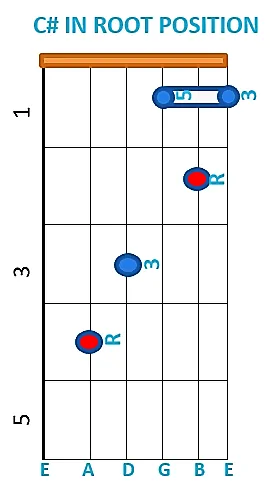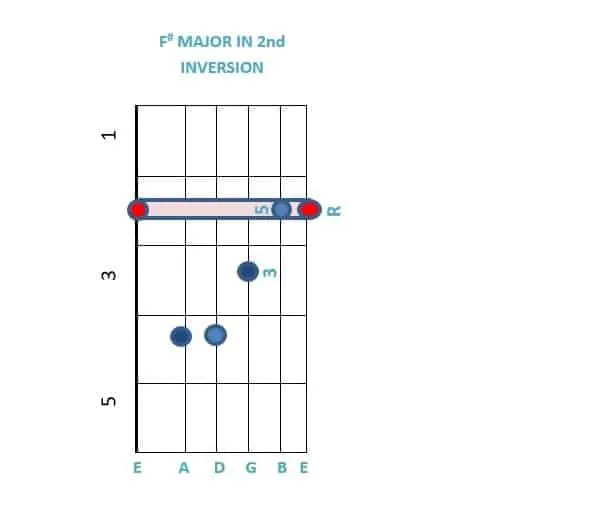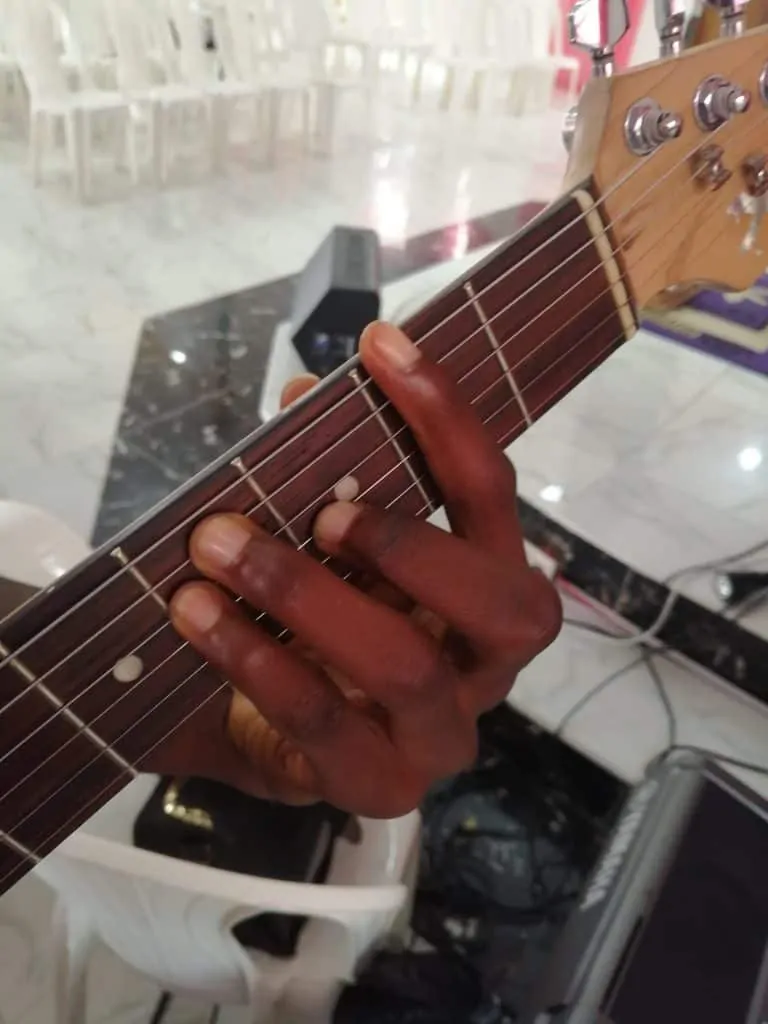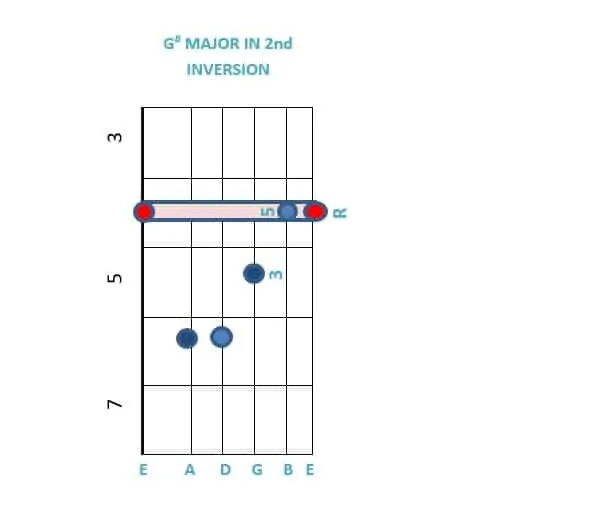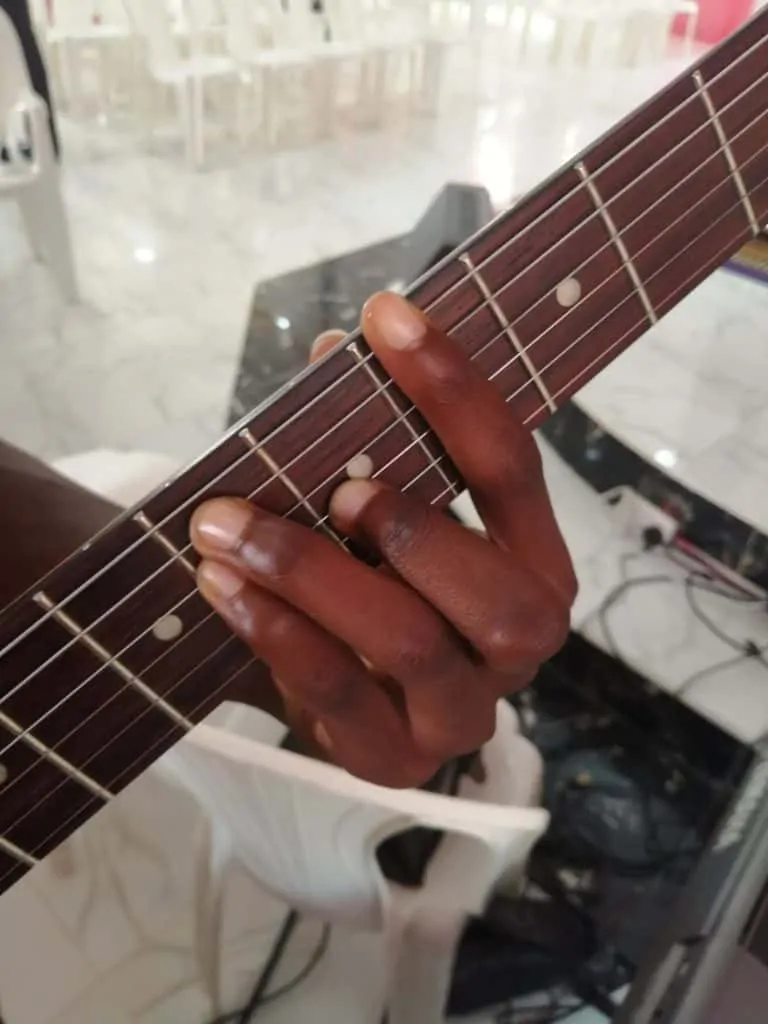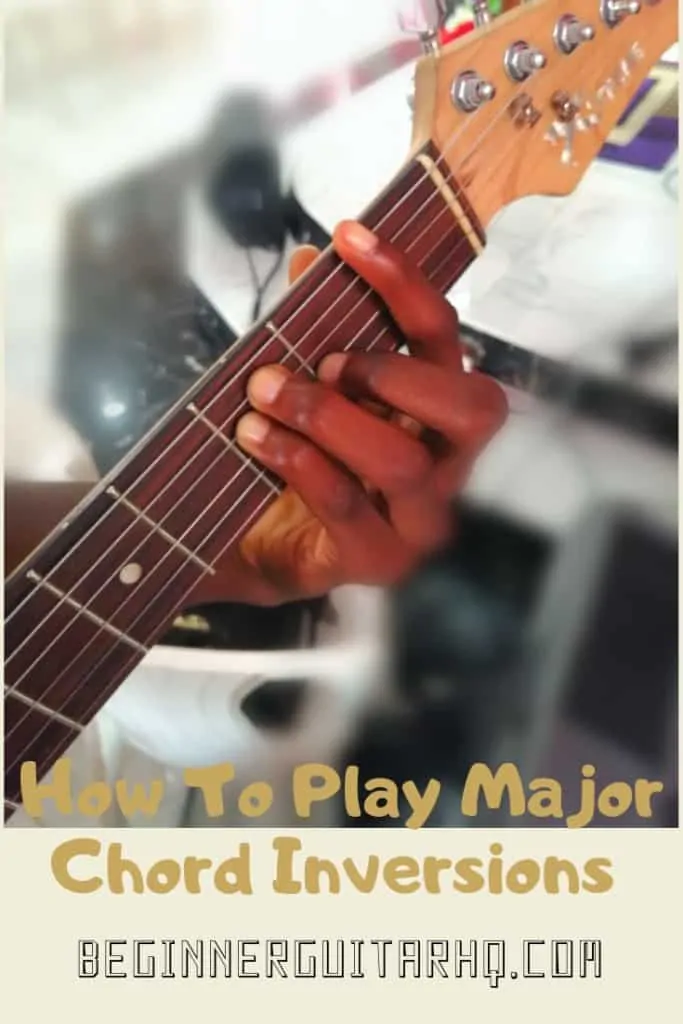A lot of times I find guitar players running from one fretboard end to another just to play the major chords for a particular song while breaking unnecessary sweat. These can sometimes hamper the smooth transition as you move from one chord to the other. The chords will also sound unprofessional as you tend to struggle getting the rhythm of the song right and, rhythm is a fundamental part of every song.
In this lesson, you will be learning a better and faster way of getting those major chords down as I’ll be showing you how to play major chord inversions. This will help you quickly recognise the nearest notes and chord shapes closest to your present position on the fretboard. You don’t just learn how to play chords but this also helps you memorise your fretboard notes faster.
So if you are ready, let’s dive right in!
Contents
The Tools
Right off the blocks you’ll need to have some tools to be able to make the most of the information in this major chord inversion lesson. These are tools for making sense of the musical concepts and ideas that I’m about to show you.
The first thing that you must know is the guitar box. This represents the frets and strings of your guitar while holding the guitar vertically upright with the strings facing you (with the body sitting on the floor). You can check the diagram below.
The second tool is the table of major scale notes for all keys used in music and guitar playing. This is very useful for quickly locating what key corresponds to a particular scale degree in whatever key you happen to be playing in.
| MAJOR SCALES | DEGREES OF NOTES | |||||||
| 1 | 2 | 3 | 4 | 5 | 6 | 7 | 8 | |
| C | C | D | E | F | G | A | B | C |
| C# | C# | D# | F | F# | G# | A# | C | C# |
| D | D | E | F# | G | A | B | C# | D |
| D# | D# | F | G | G# | A# | C | D | D# |
| E | E | F# | G# | A | B | C# | D# | E |
| F | F | G | A | A# | C | D | E | F |
| F# | F# | G# | A# | B | C# | D# | F | F# |
| G | G | A | B | C | D | E | F# | G |
| G# | G# | A# | C | C# | D# | F | G | G# |
| A | A | B | C# | D | E | F# | G# | A |
| A# | A# | C | D | D# | F | G | A | A# |
| B | B | C# | D# | E | F# | G# | A# | B |
Table of Major Scale notes in all keys
Note: All scale degrees with #s are also known by their corresponding enharmonic bs (e.g D# is same as Eb) except for F and C which have only sharps. Only sharps have been used here for the sake of clarity
Let’s get down to the real business!
What Are Major Chords?
Before knowing major chord inversions you’ll need to know what major chords are. Major chords are simply chords containing three notes of a major scale which includes the first (root), the third, and fifth degrees of the major scale.
An example is the C major scale which has C, D, E, F, G, A, B, C – where C is the first degree (or root), D is second degree, E is the third degree, F is the fourth degree and so on till you get to another C which is the eighth degree (or the octave as it starts another series of degrees). Check the table below
| SCALE NOTES | C | D | E | F | G | A | B | C |
| SCALE DEGREES | 1 | 2 | 3 | 4 | 5 | 6 | 7 | 8 |
Table of notes in C Major Scale
In view of the foregoing, you see that to form a C major chord all you need is the 1st (root), 3rd and 5th degrees which corresponds to notes C, E, G and you have a C major chord.
In a major scale, using the alternate selection of notes gives only three major chords which are the I, IV and V chords. The alternate selection of notes works by selecting the first note and then jumping the immediate note in the scale to select the next one and jumping the immediate note yet again to select the third note for the chord.
This means you start the alternate arrangement of notes on the first degree for the I chord, on the fourth degree for the IV chord, and on the fifth degree for the V chord as you’ll find in the table of chords and corresponding notes below.
| CHORDS | I | IV | V |
| SCALE DEGREES | 1,3,5 | 4,6,8 | 5,7,9 |
| CORRESPONDING NOTES | C, E, G | F,A,C | G,B,D |
Table of notes in chords I IV and V in the key of C
The table above applies to every major scale that there is in the universe. If you can find the notes of a major scale and number them in increasing order starting from the root then you can get the I, IV and V chords of any major scale.
But note that the scale degree of 9 is the same as that of 2 since the 8th degree corresponds to the 1st degree the only difference is they are played on exactly one octave higher. Likewise, 10 will be the same as the 3rd degree and so on.
Also, note that in the key of C, F is the root note for the IV chord and G is the root note for the V chord so it is easier to identify the 1,3,5 degrees for the IV chord in key F and 1,3,5 degrees in key G for the V chord.
| MAJOR SCALES | DEGREES OF NOTES | |||||||
| 1 | 2 | 3 | 4 | 5 | 6 | 7 | 8 | |
| F | F | G | A | A# | C | D | E | F |
| G | G | A | B | C | D | E | F# | G |
Table of notes for F and G Major Scales
The 4,6,8 degrees in the key of C corresponds to the 1,3,5 degrees in the key of F and 5,7,9 degrees corresponds to the 1,3,5 degrees of Key G.
What Are Major Chord Inversions?
Remember how you stacked a series of notes on each other to form the building blocks for the chord? Now, instead of starting the building from the first note of the chord you will start from somewhere else within the arrangement and then shift the position of these individual notes a little. In other words, you’ll inverse their positions, hence the origin of the word inversion in describing this concept.
So how do these major chord inversions work?
Simply switch the position of notes in the chord for the inversions by giving the first note in the chord to the note of the 3rd degree and to the note of the 5th degree.
For instance, instead of having the notes of the C major chord follow the natural sequence of C, E, G (1st, 3rd and 5th degree respectively), you inverse the order with a first inversion starting with E and a second major chord inversion starting with G. See the table below for the C major chord in the root, first and second inversions respectively.
| C MAJOR CHORD ROOT POSITION (1,3,5) | C MAJOR CHORD 1ST INVERSION (5,1,3) | C MAJOR CHORD 2ND INVERSION (3,5,1) |
| C, E, G | G, C, E | E, G, C |
C Major in 1st inversion box
C Major in 2nd inversion box
Applying this also to the IV chord and V chord is the same. In the case of the C major scale, the IV chord will be F major chord which starts on the F note – the fourth degree of the C major scale. Also the V chord in the key of C will be G major that is starting on the note G the fifth degree of the C major scale. See the tables below for the IV and V chord in their root and inverted positions respectively
| IV CHORD ROOT POSITION (1,3,5) | IV CHORD 1ST INVERSION (5,1,3) | IV CHORD 2ND INVERSION (3,5,1) |
| F, A, C | C, F, A, | A, C, F, |
F Major chord in root position box
F Major chord in 1st inversion box
F Major chord in 2nd inversion box
| V CHORD IN ROOT POSITION (1,3,5) | V CHORD 1ST INVERSION (5,1,3) | V CHORD 2ND INVERSION (3,5,1) |
| G, B, D | D, G, B, | B, D, G, |
G Major chord in root position box
G Major chord in 1st inversion box
G Major chord in 2nd inversion box
Love how this video dissects the concept of major chord inversions
Applying Major Chord Inversions to Guitar Playing.
To apply major chord inversions efficiently to play songs you’ll need to know the chord progressions of the song and be able to identify the closest major chord of the next chord for each chord in the progression.
For instance, if the chord progression of the song you are trying to play is I, IV, V, then you’ll need to find which one of the first or second inversion of the IV chord is closest to the I chord, and which V chord inversion is closest to the IV chord you just played.
A song in the key of C# that has a chord progression of I, IV, V (C# major, F# major and G# major chords), will be difficult sliding to the sixth and eighth frets to play the IV and V chords respectively after playing the I chord in the root position on the first fret.
An easier option would be to play the second inversion of the IV and V chords on the second and fourth frets respectively while the I chord is played on the first fret. Check the diagram and pictures below
C# major chord in root position
F# major chord in 2nd inversion position picture
G# major chord in 2nd inversion position picture
Some Practise Songs
Practice is the mother of perfection! To master these concepts, you’ll need to practice them well and the best way will be with songs that have major chord inversions in their progressions. I’ve listed some popular songs that are also easy to follow while you practice your major chords and their inversions. This might also get a hang of basic chord progressions for writing music.
Free Falling– Tom Petty (I IV V in key of A – A, D, E)
This song was released in 1989 by Tom Petty along with other songs in a debut album titled Full Moon Fever. This an easy song that can help you master your major chords as it can be played as a 3-chord song in the key of A. The progression is a I IV V chord with the I chord played in the first two beats of the bar, while the IV and V chords are played in the 3rd and 4th beats of the bar
Here is the video to follow and play along:
La Bamba – Richie Valens (I IV V IV in the key of A – A, D, E, D, or key of C – C, F, G, F,)
La Bamba is a very energetic song sung by Richie Valens also known as the forefather of the Chicano rock movement. This rock song was a Mexican traditional folk song before Richie made it a hit. This song is also a comfortable one to learn major chord inversions as it is entirely played with the I IV V chord in the key of A. The song is played with 1 beat per chord for each bar starting with the I chord then moves to the IV, V, then back to the IV chord. The next bar starts with the I chord and repeats the progression.
Here is the video to follow and play along:
Stir It Up – Bob Marley (I IV V in key of A – A, D, E)
Here is another song genre from a music legend that can aid your major chord inversion practise on the guitar. This reggae song from Bob Marley was released in 1973 and is pretty straightforward with the reggae rhythm centred around the I IV V chord progression. The song starts with the I chord on the 1st two beats of the bar while the IV and V chords take the 3rd and 4th beats of the bar respectively throughout the song.
Here is a video to follow and play along:
Final Take
So there you have it, your major chords inversions to help you quickly and accurately put down that chord on the guitar. It cannot be overemphasized to keep practicing as this will help your dexterity. A quick search on google for “List of 3 chord songs” can turn out a wealth of practise songs for both your entertainment and workout.



